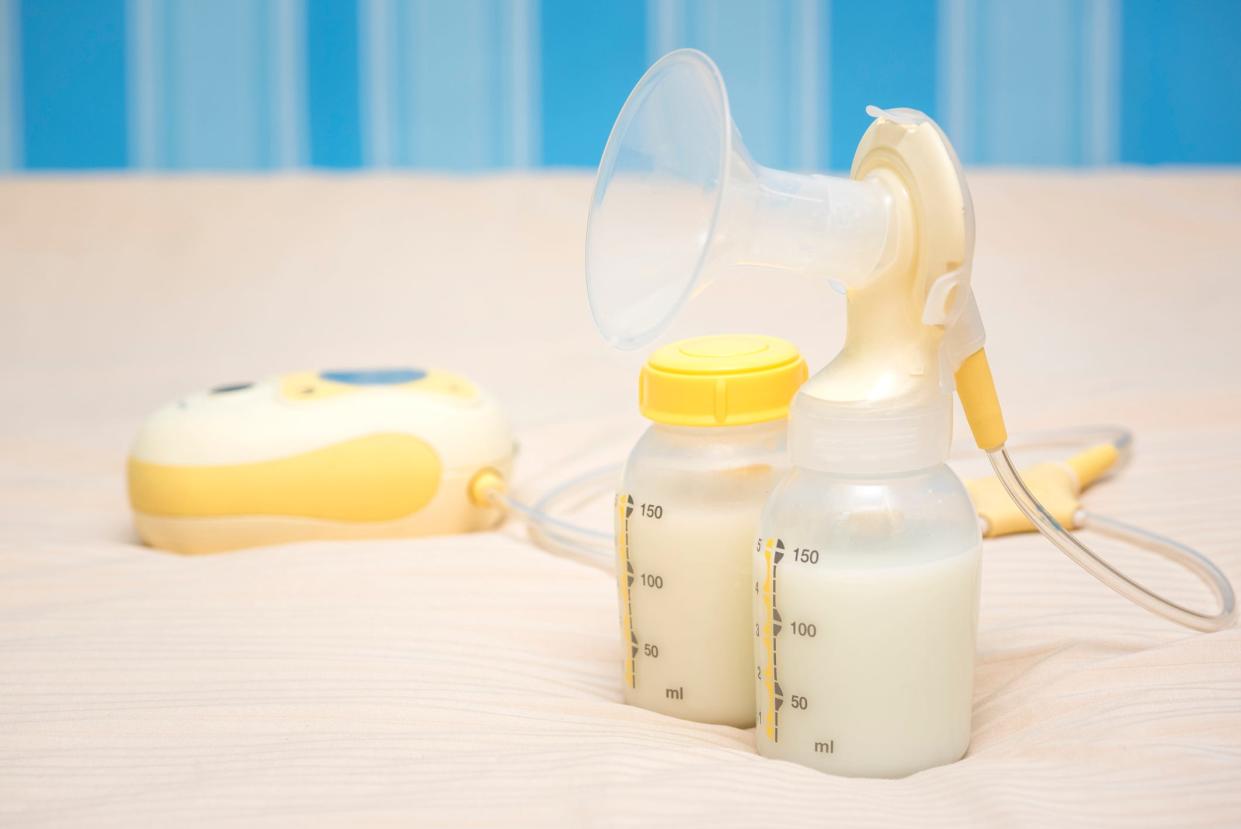Infant's death linked to contaminated breast pump; CDC warns parents about rare infection

Following an infant death linked to a contaminated breast pump last year, officials at the Centers for Disease Control and Prevention are continuing to warn parents about rare infections caused by Cronobacter sakazakii bacteria.
In a report published on Friday, the CDC notes that C. sakazakii infections can cause severe illness and death in newborns.
Most infant cases reported have been tied to contaminated powered infant formula or "breast milk that was expressed using contaminated breast pump equipment," the CDC wrote.
In addition to opened powered formula and breast pump parts, C. sakazakii has been also identified on home surfaces and, in rare cases, inside of unopened powdered formula and its manufacturing facilities.
C. sakazakii was same germ that sparked a recall and nationwide shortage of powdered infant formula last year.
2022: Baby formula recall expands to include Similac PM after another baby dies of Cronobacter
What are safe substitutes for baby formula? Avoid homemade recipes
Baby dies from infection linked to contaminated breast pump
CDC's Friday report analyzed two cases of C. sakazakii infections – including a premature male infant who died from the infection in 2022.
The baby, who had been fed a mix of breastmilk and liquid human milk fortifier through a tube, was in the hospital when signs of the illness first emerged. He was being treated for "for complications of prematurity but was stable, feeding, growing, and breathing without respiratory support," the CDC wrote.
Genetic sequencing linked the infection to bacteria isolated from a breast pump used at home. The home breast pump was cleaned in a household sink, sanitized and sometimes assembled while still moist, the CDC said.
The breast pump used at the hospital, samples from expressed milk, and the liquid human milk fortifier all tested negative for the bacteria.
The second case, which was linked to a contaminated open container of powdered infant formula, occurred in a full-term male infant in 2021. The baby was admitted to the hospital and was treated with intravenous antibiotics for 21 days, the CDC said. He made a full recovery.
More: Breastfeed for 2 years or longer, new American Academy of Pediatrics guidance suggests
Fact check: Giving water to babies is unsafe before 6 months, can lead to brain damage, death
What is Cronobacter sakazakii?
C. sakazakii is a germ that is found naturally in the environment, the CDC and the U.S. Food and Drug Administration note.
The bacteria "can exist on almost any surface," the FDA writes – noting that C. sakazakii "especially good at surviving in dry foods" like powdered infant formula, as well as powdered milk, herbal teas and starches.
C. sakazakii can be found on home surfaces, like kitchen sinks or counters, and contaminated feeding equipment.
How rare are C. sakazakii infections?
C. sakazakii infections are very rare. But when infections do occur, they can be life-threatening for infants.
The germ is known to cause severe, and often fatal, meningitis and sepsis in newborns.
Friday's report notes that, "because C. sakazakii infection is not a nationally notifiable condition, the actual incidence is unknown."
It's estimated that there are about 18 cases of invasive C. sakazakii infections in the U.S. each year.
Infants less than two months old, those who were born prematurely and/or have weakened immune systems are the most likely to get sick, the CDC notes – adding that these infections can also be serious for seniors and other individuals who are immunocompromised.
Symptoms of C. sakazakii infections
According to the CDC, symptoms of illness from C. sakazakii in infants usually begins with poor feeding and fever, as well as excessive crying or low energy. Some babies with the infection may also have seizures.
The CDC says that infants with these symptoms should be taken to a medical provider immediately.
"Cronobacter bacteria can cause severe bloodstream infections (sepsis) or meningitis (an inflammation of the membranes that protect the brain and spine)," the CDC writes.
How can C. sakazakii infections be prevented?
On Friday the CDC underlined the importance of spreading awareness about C. sakazakii infections in infants – as well as promoting crucial practices for safe hygiene, preparation and storage of infant formula and feeding equipment.
"There are steps that people can take to prevent infections," Dr. Julia Haston, a CDC expert in pediatric infectious diseases, told the Associated Press.
Prevention measures include thoroughly washing, sanitizing and drying hands, equipment and all surfaces before feeding a baby.
What's everyone talking about? Sign up for our trending newsletter to get the latest news of the day.
Contributing: The Associated Press.
This article originally appeared on USA TODAY: Cronobacter sakazakii infections can be deadly for babies, CDC warns

